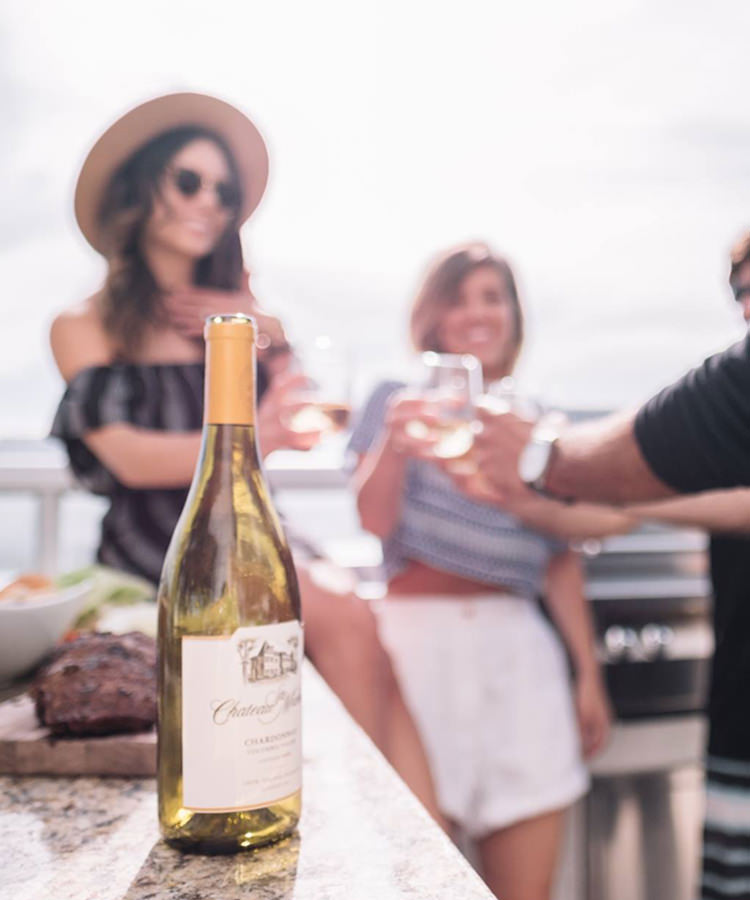One of the perks of working in the booze business is drinking lots of wine, often in the company of the guys and gals who make it. Contrary to popular belief, that’s not always over multi-course feasts or in gorgeous locales. Sometimes it’s on a back porch, in a dive bar, or over steaming coffee cups.
In the past few years, these drinks have taught me more about the beauty of the wine industry —what makes it special, unique, frustrating, and elusive — than any classroom discussion, tasting panel, or seminar.
It’s worth noting that winemakers aren’t snobs. They’re a three-part medley of artists, scientists, and business people who love their jobs. Egos get checked at the door and glasses get filled. Winemakers have taught me a lot, and not just about wine.
Curiosity is key to success
Winemakers don’t drink in a vacuum. Unlike most casual wine drinkers, wine professionals are constantly searching for a new style, interesting grape variety, or emerging region in between bottling runs, blending trials, and harvests.
While I’ve yet to meet a winemaker who doesn’t enjoy their own wines, a massive appreciation for diversity is consistent across the community. From the Mosel’s Johannes Selbach proclaiming his love of California Zinfandel, to appreciating true Champagnes with Jared and Tracey Brandt of Berkeley’s Donkey and Goat, appreciating diversity is imperative to understanding wine.
Take Tyler Thomas, winemaker of Dierberg and Star Lane Vineyards in California’s Central Coast. With every vintage, he insists on picking one section of Cabernet Sauvignon weeks before the main harvest just to see what “less ripe” California Cabernet tastes like. (Spoiler: it tastes pretty great).
“I want to emphasize texture over flavor,” he explained to me over lunch in May. “But I also want to listen to the vineyard and question our ideas about what ‘ripe’ really means in California. There’s more than one ‘ripeness’ that makes great wine.”
Skepticism is always allowed, and so is criticism. Just don’t knock any wine (or person, label, food, religion, or ideology) until you’ve tried it.
History is important, but it isn’t everything
Like all cultural or artistic pursuits, wine is influenced by millennia of history at every turn. From Cistercian monks who planted Burgundy to the Romans who decided to plant Riesling in Germany and Syrah in France, it can feel daunting to try to memorize everything that came before us. While it’s important, we’ve also come a long way from adding resin to wine and transporting it in clay vessels on camels.
Today, technology is just as important as tradition and denouncing it is silly, according to Ernst Loosen of Dr. Loosen and Chateau Ste. Michelle’s Eroica.
“Who the f*ck knows what people actually did 200 years ago? Elegance and complexity makes a great wine, and we should use technology to help us do that when we can,” Loosen says.
Even highly traditional winemakers like Nahe legend Helmutt Dönnhoff see the value in adapting and passing the proverbial torch.
“The way we farm, and will keep farming, is the same way as previous generations,” Dönnhoff explains. “A winery is for many generations, not just one. I had a great time, and now my son is in charge.”
We don’t want to forget how we got here or the critical choices that have kept humanity making (and chugging) wine since the dawn of time, but let’s not live in the past. Let’s move forward.
We are custodians of our environments
Across wine regions, the soil is praised more than the people who tend it. Overall, there’s a certain custodial attitude that surrounds the winemaking community.
“I’m just the babysitter of the vines,” proclaims Rolando Herrera of Napa’s Mi Sueño Winery. “Great wine is a gift from Mother Nature.”
And wine really is a gift. Unlike other drinks, wine has but one chance to be made each year; you can’t ferment a batch whenever you want. There are more chances for disaster — from heat waves to barrel spills to bacteria — than there are to create drinkable greatness.
Herrera grew up farming tiny plots in the Mexican mountains before falling in love with the Napa Valley and working his way up. He knows a thing or two about nurturing.
“I never wanted to just buy grapes, because I watched how other people lost control of the farming, and how the land was treated,” he explains. “You have to nurture it.”
Nick Weiss of St. Urbans-Hof winery agrees.
“You can’t underestimate the importance of plant material,” he said as we sipped Rieslings from his family’s multi-generational estate.
Reuse, reduce, recycle. Additionally, compost, garden, hug a tree, love a grapevine.
There isn’t a single recipe for success
Even the most passionately “natural” winemakers understand that orange wine won’t please every drinker, and the people behind bargain brands know their $10 red blends aren’t satisfying Burgundy connoisseurs. Quite simply, they let the haters hate and continue making styles that inspire them and pay their bills.
Also, even winemakers remember their first drinks, which generally weren’t $50-plus bottles. They understand the purpose and pleasure a $10 bottle can bring after a long week. Some of my favorite wineries, such as Napa’s Turley Wine Cellars, Heitz Cellar, and Stony Hill, deliberately sell their bottles at lower prices to ensure their wines are enjoyed, not hoarded.
Momentum doesn’t build until a wine is sold, and nobody understands that more than winemakers. Most have put their hearts, souls, and credit scores on the line to tend their dreams.
Whether that dream is Herrera’s vision of his own label, the continuation of a family legacy like Dönnhoff, or mass-producing affordable, everyday bottles, every winemaker has direction. Each one moves with purpose. It’s valuable strategy for all of us to consider, no matter where we’re headed.
